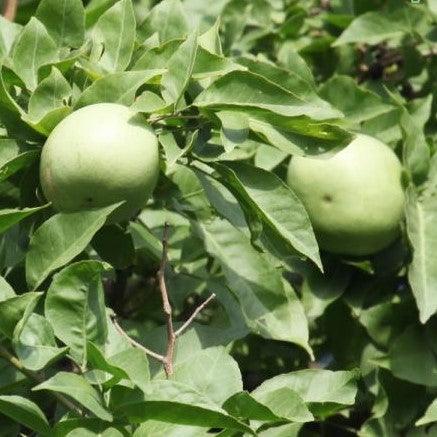
Discover the Nutritional Benefits of Aegle Marmelos | Feronia Pellucida, and Crateva Marmelos Plants
Original price
Rs. 99.00
-
Original price
Rs. 99.00
Original price
Rs. 99.00
Rs. 99.00
-
Rs. 99.00
Current price
Rs. 99.00
-
Common name
- Bael Fruit
- Regional name:
- Marathi - Bael, Bengali - Bela, Gujarati - Bil, Kannada - Bilpatre, Malayalam - Kuvalam, Sanskrit - Bilva, Tamil - Vilvam, Telugu - Maredu, Urdu - Bel, Hindi - Bael
- Category:
- Fruit Plants, Trees, Medicinal Plants
- Family:
- Rutaceae or Lemon family
-
Introduction
The Indian bael (Aegle marmelos), also known as wood apple or bilva, is a deciduous tree native to India, Bangladesh, and Nepal. It is a significant tree in Hinduism and has numerous medicinal properties. The fruits, leaves, bark, and roots have been used in traditional Ayurvedic medicine for centuries.
Plantation
- Site selection: Choose a well-draining, sunny location with fertile loam or sandy loam soil. The tree can tolerate semi-shade, but full sun is ideal for better fruiting.
- Planting season: The best time to plant bael is during the monsoon season or the early spring.
- Planting method: Saplings are preferred over seeds, as they yield faster results. Plant the saplings in holes twice the size of the root ball, spaced about 10-12 feet apart. Add organic matter or compost to the planting hole and water thoroughly after planting.
Growing
- Watering: Regular watering is essential during the initial years. However, once established, bael trees are drought-tolerant and require less frequent watering.
- Fertilization: Apply organic manure or a balanced fertilizer during the growing season. Avoid using high nitrogen fertilizers, as they can lead to excessive vegetative growth and reduced fruiting.
- Pruning: Regular pruning is necessary to maintain a manageable size and promote fruiting. Remove dead, diseased, and weak branches to encourage new growth.
Care
- Pest control: Bael trees are relatively pest-resistant but may be affected by mealybugs, fruit flies, and caterpillars. Use organic pesticides or introduce beneficial insects to control pests.
- Disease control: Bael trees can suffer from fungal diseases like powdery mildew and leaf spot. To prevent diseases, ensure proper air circulation and avoid excessive watering.
Benefits
- Medicinal properties: Bael fruit, leaves, bark, and roots have numerous medicinal properties, including anti-inflammatory, anti-diabetic, anti-microbial, and anti-cancer effects.
- Digestive health: The bael fruit is known to improve digestion and alleviate gastrointestinal issues such as constipation, diarrhea, and ulcers.
- Cultural significance: The bael tree holds a sacred place in Hinduism, and its leaves are used in rituals and offerings to deities, especially Lord Shiva.
- Environmental benefits: The bael tree helps prevent soil erosion, provides shade, and contributes to biodiversity.
